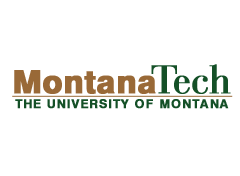Below is a summary of the abstract you submitted. Presenting author(s) is shown in bold.
If any changes need to be made, you can modify the abstract or change the authors.
You can also download a .docx version of this abstract.
If there are any problems, please email Dan at dar78@pitt.edu and he'll take care of them!
This abstract was last modified on April 17, 2015 at 12:08 p.m..

Bacteriophages, the most abundant biological entities on the planet, are viruses that affect bacteria. The discovery, cataloging, and characterization of the diversity of phages is an active and fertile area of research worldwide, involving pre-college and college students through projects such as HHMI SEA-PHAGES, University of Pittsburgh’s PHIRE, and NIH-SEPA’s Bringing Research Into the Classroom (BRIC). Bacteriophages, or phages for short, that affect species of Mycobacteria are called mycobacteriophages, which includes the newly isolated phage OwlsT2W. OwlsT2W was isolated from a compost pile in Butte, MT and forms small plaques with well-defined edges. This phage has been classified as a temperate phage in the F1 cluster. Transmission electron microscopy revealed OwlsT2W to have Siphoviridae morphotype, with the capsid portion of the phage 70 nm in diameter and the tail approximately 190 nm in length. A restriction digest was performed to create a “phage phingerprint” and was compared to known phages. The genome for OwlsT2W was sequenced by the Pittsburgh Bacteriophage Institute using Illumina sequencing, and has a genome that is 56,515 bp in length and a G/C content of 61.2%. The annotation of this genome resulted in the identification of 104 separate protein-coding genes. Out of these, genes 27, 31, 32, and 41 have been chosen for individual study. These genes have been determined to code for an HTH DNA-binding domain protein, lysin A, lysin B, and integrase proteins, respectively. The integration of OwlsT2W was studied by PCR using primers based from a previous study of Mycobacteriophage Tweety. OwlsT2W attP and the corresponding attB were thereby confirmed experimentally. Experiments to analyze genes 27, 31, and 32 by PCR and to clone for protein expression are ongoing, and a summary of OwlsT2W molecular and bioinformatics characterization will be presented.
